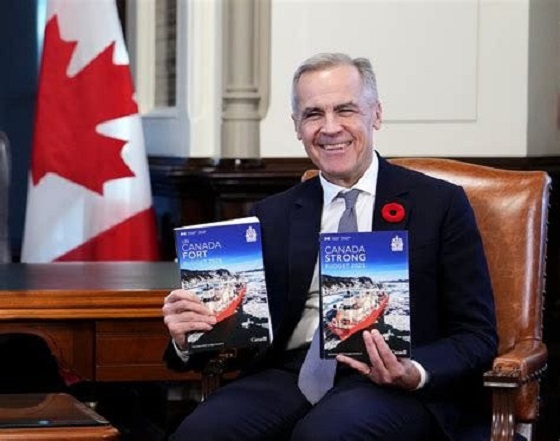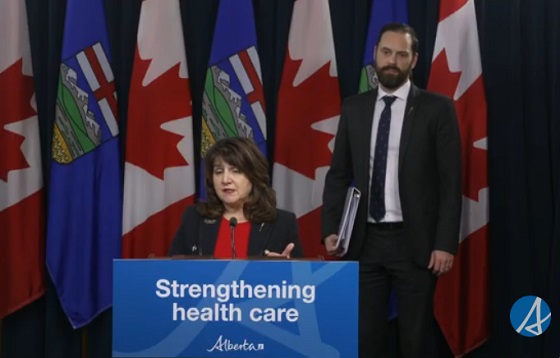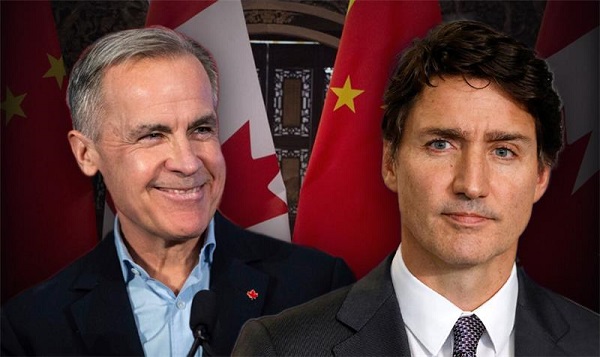Alberta
My European Favourites – Helsinki, Finland

 Founded only in the 16th century, Helsinki is the geographic, political, financial and cultural capital of Finland. In addition to the area Helsinki encompasses on the mainland, it includes over 300 islands on the inlets and bays of the easternmost arm of the Baltic Sea, the Gulf of Finland. Combined with Stockholm and Tallinn, Helsinki is one of our top tour destinations for youth hockey and ringette teams for over twenty years. Finns are avid sports people and great hosts for our Canadian groups.
Founded only in the 16th century, Helsinki is the geographic, political, financial and cultural capital of Finland. In addition to the area Helsinki encompasses on the mainland, it includes over 300 islands on the inlets and bays of the easternmost arm of the Baltic Sea, the Gulf of Finland. Combined with Stockholm and Tallinn, Helsinki is one of our top tour destinations for youth hockey and ringette teams for over twenty years. Finns are avid sports people and great hosts for our Canadian groups.

View of Helsinki harbour’s busy Market Square and the prominent Lutheran Cathedral.
Before gaining independence in 1917, Finland was ruled by the Swedes and Russians. The city was founded by Sweden’s King Gustav in 1550 to rival the Hanseatic League member city once known as Reval. Today, Reval is known as Tallinn, Estonia, and it can be reached by a two hour ferry ride.
In 1809, Russia gained control of Helsinki, and in 1812, moved Finland’s capital city from Turku to Helsinki. The decision was made because Helsinki was closer to St. Petersburg and easier to defend because of the Sveaborg sea fortress which guards the sea entrance into the city. Today the sea fortress is named Suomenlinna, and is one of the city’s most popular attractions.
The population of Helsinki proper is about 650,000, and it has a metro population of around 1.5 million including its neighboring municipalities like Vantaa and Espoo. This makes it the 3rd largest city of the Nordic countries, after only Stockholm and Copenhagen. While having all the conveniences of a modern city, Helsinki is a great destination for nature lovers. There are parks and vast areas of unspoilt nature to explore year round. In the summer months, when days are long, there are beaches, boating and watersport opportunities on the sea or at nearby lakes.
Helsinki has an interesting mix of various architectural styles including modern structures that are on the cutting edge of design. The city has a vibrant nightlife with many clubs, bars and late night eateries. The culinary scene is varied from the popular local hamburger chain, Hesburger, to Michelin-star restaurants. There is even a restaurant in the city centre decorated with rustic tables and old tractors serving traditional reindeer dishes. If you want to enjoy a beer while passing Helsinki’s main sights, you may be interested in the Sparakoff Pub Tram. The red colored tram with the destination board reading “PUB” takes about 45 minutes to make a round trip. Plenty of time to enjoy a beverage or two.

The Russian Orthodox Uspenski Cathedral, the Allas Sea Pools and the Sky Wheel Helsinki.
Katajanokka Island
Inaugurated in 1868, the Uspenski Cathedral is the center of the Eastern Orthodox faith in Finland. The cathedral was built using 700,000 red bricks that were brought in by barge from a demolished fortress in the Baltic. Entrance to the cathedral is free, and about half a million tourists visit it annually to see the elaborately decorated interior and several valuable icons. The cathedral was built upon a hillside of the Katajanokka island, which forms the eastern side of the city center and the Helsinki harbour. Overlooking the city, the cathedral is a great place to start our journey through Helsinki.
Walking down from the cathedral to the waterfront, we immediately see the 40 meter tall Sky Wheel Helsinki. The wheel offers great views of the city, the sea and the surrounding islands. The wheel has two unique gondolas. One’s interior has leather seats with a glass floor and includes a bottle of champagne for a 30 minute ride. The other is the SkySauna. Yes, we all know Finns love their saunas, so why not combine a ferris wheel ride with a sauna.
Next to the wheel, we find the Allas Sea Pool which has three pools right in the Heslinki harbour. One pool is for lap swimming, one is for families and one is a salt water pool. The fresh water pools are heated, the salt water pool is not. In addition to the pools, there are saunas and a restaurant with terraces to enjoy the views. For those looking to experience a Finnish sauna, it’s a convenient location. If you have time, I would recommend the Löyly sauna which is located near the Tallin ferry terminal. There are many places in Helsinki offering a sauna, so finding one is easy.

The Presidential Palace, Market Square and a food vendor selling a fish and vegetable lunch.
Kauppatori Market Square
Taking one of the little bridges from Katajanokka island to the market square we will pass the yellow Presidential Palace. The former Russian imperial palace, contains the Office of the President of the Republic and is used for official functions and receptions. Continuing past the palace, we arrive at the Kauppatori Market Square. The square has been a marketplace for hundreds of years and is a popular tourist attraction. The year round market’s kiosks sell fresh fish, fruit, vegetables, handcrafts, clothing and souvenirs. There are also stands that sell prepared food and beverages. A warm bowl of salmon soup with rye bread or a plate of grilled fish with vegetables make a quick, inexpensive and tasty lunch. The square faces the busy Port of Helsinki (Helsingen Satama) and from here you can take boat tours of the archipelago or to the Suomenlinna Island fortress. You can also see the huge Viking and Silja Line ferries arriving in the morning and departing in the evening for Stockholm.

Senate Square with the Helsinki Cathedral. Group photo of our 2016 World Juniors fan tour.
Senate Square
The light blue Helsinki City Hall is located right in front of the Market Square. Taking a side street along the City Hall we will arrive at the expansive Senate Square with a statue of Russian Czar Alexander II at its centre. The white neo-classical Lutheran Helsinki Cathedral, built in 1852, dominates the north side of the square and towers over the city center. The west and east sides of the square have two similarly looking yellow buildings. The eastern building houses the offices of the prime Minister of Finland and the cabinet. The one on the west side is the main building of the University. North of the University building is the National Library of Finland. The ‘Sederholm house” on the southeast corner of the square is the oldest, built in 1757. The square is used for many events including art displays, food festivals, concerts, New Year’s celebrations and the Christmas market.

Helsinki’s Old Market Hall, the Havis Amanda fountain and the Esplanadi’s pedestrian walkway.
The Old Market Hall and the Esplanadi
Walking back towards the harbour, we will go past the market square on the west side of the harbour to Helsinki’s Old Market Hall. Open in 1889, it is Finland’s oldest indoor market. In the lively market you will find merchants selling meat, fish, shellfish, cheese, fruit, vegetables, baked goods, spices, coffee, tea and even a small wine and spirits shop. The cafés and restaurants in the Old Market Hall are a great place to have a break from sightseeing or have a nice lunch.
After grabbing a coffee at the Market, we head back towards the market square and to an interesting fountain that was built in 1908. The Havis Amanda fountain has a nude female statue, often referred to as Manta, at the centre. It was created by Finnish artist Ville Vallgren at his studio in Paris, France. The fountain has four seals looking up to the sea nymph as she rises out of the water. The first of May is the start of the summer for students and in celebration they would don a white cap. Since the early days of the fountain, students have celebrated “May Day” by placing a cap on the head of Manta.
The Havis Amanda fountain sits at the foot of the National urban park called the Esplanadi. This elongated park, opened in 1818, has a wide pedestrian center with numerous benches and green space on either side. The historic Kappeli restaurant, open since 1867, and the Espa Stage, used for concerts, are at the eastern entrance to the Esplanadi. There are pieces of art throughout the Esplanadi including a statue of Finland’s national poet, Johan Ludvig Runeberg, at the very centre of the park. At the western end of the park, we find the Swedish language theatre aptly named, the Swedish Theatre. Originally built in 1860, it burned down just three years later. In 1866, it was rebuilt in neo-classical style, but in 1935 it was renovated and the richly decorated exterior was changed by the architects to a simpler “functionalist” style.
The Esplanadi has a street on either side of the park and the surrounding buildings, especially on the north side, have upscale shopping and restaurants. On the north west end of the park just across the street from the Swedish Theatre is the Stockmann Department Store. The iconic Stockmann building, the largest department store in the Nordic countries, was built in 1930 and the brand’s history dates back to 1858.

The entrance façade and clock tower of the Helsinki Train Station. The unique Kamppi Chapel.
The Central Station, Art and A Chapel of Silence
Turning right at the Mannerheimintie street, we walk about 200 meters to Kaivokatu street where we can see the train station on the right. The Helsinki Central Station is the main hub for commuter and long-distance trains for approximately 200,000 people per day. The impressive Finnish granite building was inaugurated in 1919 and has a pair of statues standing guard while holding spherical lamps on each side of the grand entrance. Along with the “stone men,” the station is known for the clock tower on its east side. The Helsinki Central Station has a city metro station, restaurants and an underground shopping centre.
Beyond the train station is a huge open space called the Rautatientori, or Railway Square. On the south side of the square is the Ateneum, the museum of Finnish and international art. The museum, in a beautiful 1887 building, has Finnish works of art from the 18th century to the 20th century and is one of the three museums that form the Finnish National Gallery. In addition to the extensive art from Finland, it has over 600 international pieces.
Going back on Kaivokatu street we cross Mannerheimintie street to Simonkatu street and walk about a block. We will see a curious looking oval cylindrical building with a wood exterior. This is the very unique Kamppi Chapel or the “Chapel of Silence.” The chapel holds up to 60 people and is intended to be a place of calm and silence in a busy urban centre. The chapel is free to visit during opening hours.

The Lutheran Temppeliaukio Church’s alter, pipe organ and the upper balcony.
Parliament and Museum District & Rock Church
After enjoying a moment of silence, we make our way back to Mannerheimintie street and continue along it until we reach Mannerheim Square and the equestrian statue of Marshall Gustaf Mannerheim. The bronze statue of the Finnish military leader and statesman was erected in 1960. The statue sits in front of the Kiasma, the museum of contemporary art, which was built in 1990. Like the Ateneum, the Kiasma is part of the Finnish National Gallery. Near the Kiasma, you will find the architecturally striking Helsinki Central Library Oodi, the Helsinki Music Centre, the National Museum of Finland and the event and congress center, Finlandia Hall. Across the street from the Mannerheim statue, we also find the Finnish Parliament building. The red granite parliament building with fourteen Corinthian columns was built in 1931.
Only a couple of minutes walk from the Mannerheim Square is the Temppeliaukion Kirkko, which is better known as the Rock Church. Designed by architect brothers Timo and Tuomo Suomalainen and opened in 1969, the Lutheran church was built into solid rock, and is filled with natural light from the large skylight that leads up to the copper dome. The acoustics in the church are exceptional and it is frequently used for concerts. The exposed rock walls of the church create an interesting backdrop for the altar and an interesting contrast with the church organ with 3001 pipes. The church welcomes over half a million visitors a year.

The Sibelius monument, our Oilers group with Jari Kurri at Hartwall Arena and the pub tram.
The Sibelius Monument and the Olympic Stadium
West of Helsinki’s city center is Seurasaarenselkä Bay. On the eastern side of the bay, you will find Sibelius Park and the Sibelius Monument. The monument, made from more than 600 hollow steel pipes, is dedicated to Finland’s greatest composer, Jean Sibelius. He is noted for having encouraged, through his works, the rise of a Finnish national identity and independence from Russia. In the center of the bay is the densely forested Seurasaari island which is home to the Seurasaari Open-Air Musuem. The museum has transplanted wooden buildings from throughout Finland.
In 1952, Helsinki was the host city for the 15th Olympiad and is the northernmost city to host the summer Olympics. The flame was lit by Finland’s greatest Olympian, runner Paavo Nurmi, who won 9 gold and 3 silver medals at the 1920, 1924 and 1928 games. The Olympic Stadium is located only two kilometers north of the city centre and was originally built for the 1940 Olympics that were cancelled due to the second World War. The stadium has undergone renovations in the early 1990s, in 2005 for the World Championships in Athletics, and another renovation phase was scheduled to be completed in 2020. Over time, the stadium has gone from being able to host 70,000 spectators to just over 40,000. The stadium today hosts mainly soccer games, athletics competitions and concerts. The stadium’s 72 meter tower is a Helsinki landmark and its height is equal to the length of Matti Järvinen’s gold medal javelin throw in the 1932 Summer Olympics. The stadium visitor center is located at the foot of the tower. While in Finland, you may want to try the alcoholic “Long Drink” that was developed to serve visitors to the 1952 Olympics. Locally the Long Drink is called a “Lonkero” and the original, a mix of gin and grapefruit soda, is made by Hartwall.
Not far from the Olympic Stadium is the Linnanmäki amusement park, which opened in 1950. The park is owned by a non-profit agency that operates the park to raise funds for Finnish child welfare programs. South of the park is Töölö Bay with a surrounding green space, walking paths and two important cultural centres, the Helsinki City Theatre and the Finnish National Opera and Ballet.
A couple of kilometers north of Linnanmäki is the 14,000 seat Hartwall Arena, which is the home of the KHL’s Jokerit hockey team. The arena was built in 1997 and is used mostly for basketball, hockey and concerts. In 2016, we had a large group of Canadian hockey fans in Helsinki for the IIHF World Junior Hockey Championships, and the Hartwall Arena was the main venue for the tournament. Finland won gold with a team loaded with future NHLers Sebastian Aho, Patrick Laine, Mikko Rantanen, Kasperi Kapanen, Olli Juolevi and tournament MVP Jesse Puljujarvi. The atmosphere in the arena was electric with thousands of patriotic Finns erupting in joy at the final whistle. If Canada can’t win, the next best thing is to get caught up in the passion of the local fans.
In the fall of 2018, we had a group of Edmonton Oilers fans in Gothenburg, Sweden for the NHL season’s opening game against the New Jersey Devils. At the end of the tour, we took the overnight ferry from Stockholm to Helsinki. During our city tour, we stopped at the Hartwall arena and we surprised the group with a meeting with Oilers legend Jari Kurri. After many photos and autographs, Kurri, who was the General Manager of local team Jokerit, graciously talked hockey and watched practice with us.

The Suomenlinna ferry leaving from Market Square, the fortress walls and the dry dock.
Suomenlinna
The Suomenlinna, or Sveaborg, is an inhabited sea fortress built on eight islands south east of the city centre at the entrance to Helsinki harbour. A UNESCO World Heritage site, it was originally founded by the Swedes in 1748, but in 1808, the fortress was overtaken by Russia. It remained in Russian control until Finnish independence in 1918. The fortress welcomes over half a million tourists and locals annually. The summer months are especially busy and Suomenlinna can be easily reached by a short ferry ride from Market Square.
There are just under 1000 permanent residents on Suomenlinna and just under 400 people who work on the island year-round. Some of the reconstruction of the fortifications and general maintenance is done by volunteer inmates, who are part of an on-site minimum-security penal labour colony. A guided visit to the fortress includes Great Castle Courtyard, Piper’s Park and the large Dry Dock. There are various museums at Suomenlinna including one detailing the life of Swedish officers in the 18th century, a toy museum, a military museum, a submarine museum and a customs museum. The main Suomenlinna Museum, located in the Suomenlinna Centre, details the history of the fortress and its restoration.

The Silja Line ferry, leaving the Helsinki harbour, and the ship’s entertainment lounge.
Ferry to Stockholm, Tallinn, Riga and St. Petersburg
Getting around the Baltic Sea is easy with the numerous daily sailings by large ferry boats that include onboard shopping, restaurants, entertainment, and cabin quarters for overnight trips.
From the Helsinki Harbour in the city center, there are two sailings per day to Stockholm, Sweden. The Tallink Silja line uses the Olympia Terminal on the west side of the harbour, while the Viking Line has their terminal on the east side of the harbour on Katajanokka island. The overnight ferries leave in the early evening, and arrive in Stockholm the next morning, about 17 hours later. Prices for a return trip are very affordable.
The newer West Harbour outside of the city center is where you can catch the numerous daily two hour ferries to Tallinn, Estonia. A day trip to Tallinn departing Helsinki in the morning and returning in the evening is common although I would recommend a stay in Tallinn if you have time. The West Harbour is also where you can take the St. Peters Ferry to St. Petersburg, Russia, and with a stay of less that 72 hours you can do it without a visa. These are the main ferry routes, but there may be ferry services to Latvia, Germany and other destinations available.
Lets Go To Helsinki
Even though Helsinki is young city by European standards, it is a great place to visit. In addition to the activities and sights I have outlined here, other parts of Finland, including Lapland, are worth exploring. I have found people in Finland to be friendly, warm, open and sincere. Finland is very safe, and the country regularly ranks high on the list of the best places to live in the world. With convenient and low cost travel by ferry to neighboring countries, it is an easy add to any itinerary of the Baltic region. I look forward to returning to Helsinki with a hockey or ringette group very soon, and in 2027, Finland is scheduled to host the World Juniors again.
Explore Europe With Us
Azorcan Global Sport, School and Sightseeing Tours have taken thousands to Europe on their custom group tours since 1994. Visit azorcan.net to see all our custom tour possibilities for your group of 26 or more. Individuals can join our “open” signature sport, sightseeing and sport fan tours including our popular Canada hockey fan tours to the World Juniors. At azorcan.net/media you can read our newsletters and listen to our podcasts.
Read more stories from Paul Almeida.
Images compliments of Paul Almeida and Azorcan Tours.
Alberta
Alberta can’t fix its deficits with oil money: Lennie Kaplan
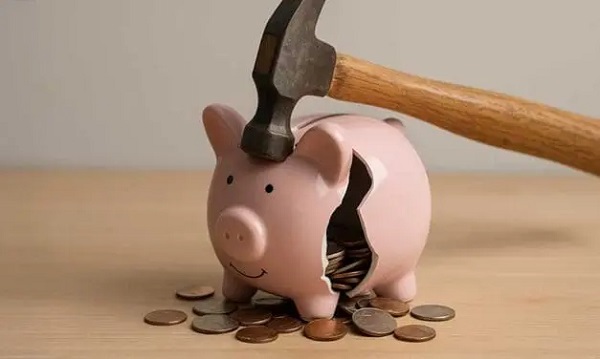
This article supplied by Troy Media.
Alberta is banking on oil to erase rising deficits, but the province’s budget can’t hold without major fiscal changes
Alberta is heading for a fiscal cliff, and no amount of oil revenue will save it this time.
The province is facing ballooning deficits, rising debt and an addiction to resource revenues that rise and fall with global markets. As Budget 2026 consultations begin, the government is gambling on oil prices to balance the books again. That gamble is failing. Alberta is already staring down multibillion-dollar shortfalls.
I estimate the province will run deficits of $7.7 billion in 2025-26, $8.8 billion in 2026-27 and $7.5 billion in 2027-28. If nothing changes, debt will climb from $85.2 billion to $112.3 billion in just three years. That is an increase of more than $27 billion, and it is entirely avoidable.
These numbers come from my latest fiscal analysis, completed at the end of October. I used conservative assumptions: oil prices at US$62 to US$67 per barrel over the next three years. Expenses are expected to keep growing faster than inflation and population. I also requested Alberta’s five-year internal fiscal projections through access to information but Treasury Board and Finance refused to release them. Those forecasts exist, but Albertans have not been allowed to see them.
Alberta has been running structural deficits for years, even during boom times. That is because it spends more than it brings in, counting on oil royalties to fill the gap. No other province leans this hard on non-renewable resource revenue. It is volatile. It is risky. And it is getting worse.
That is what makes Premier Danielle Smith’s recent Financial Post column so striking. She effectively admitted that any path to a balanced budget depends on doubling Alberta’s oil production by 2035. That is not a plan. It is a fantasy. It relies on global markets, pipeline expansions and long-term forecasts that rarely hold. It puts taxpayers on the hook for a commodity cycle the province does not control.
I have long supported Alberta’s oil and gas industry. But I will call out any government that leans on inflated projections to justify bad fiscal choices.
Just three years ago, Alberta needed oil at US$70 to balance the budget. Now it needs US$74 in 2025-26, US$76.35 in 2026-27 and US$77.50 in 2027-28. That bar keeps rising. A single US$1 drop in the oil price will soon cost Alberta $750 million a year. By the end of the decade, that figure could reach $1 billion. That is not a cushion. It is a cliff edge.
Even if the government had pulled in $13 billion per year in oil revenue over the last four years, it still would have run deficits. The real problem is spending. Since 2021, operating spending, excluding COVID-19 relief, has jumped by $15.5 billion, or 31 per cent. That is nearly eight per cent per year. For comparison, during the last four years under premiers Ed Stelmach and Alison Redford, spending went up 6.9 per cent annually.
This is not a revenue problem. It is a spending problem, papered over with oil booms. Pretending Alberta can keep expanding health care, education and social services on the back of unpredictable oil money is reckless. Do we really want our schools and hospitals held hostage to oil prices and OPEC?
The solution was laid out decades ago. Oil royalties should be saved off the top, not dumped into general revenue. That is what Premier Peter Lougheed understood when he created the Alberta Heritage Savings Trust Fund in 1976. It is what Premier Ralph Klein did when he cut spending and paid down debt in the 1990s. Alberta used to treat oil as a bonus. Now it treats it as a crutch.
With debt climbing and deficits baked in, Alberta is out of time. I have previously laid out detailed solutions. But here is where the government should start.
First, transparency. Albertans deserve a full three-year fiscal update by the end of November. That includes real numbers on revenue, expenses, debt and deficits. The government must also reinstate the legal requirement for a mid-year economic and fiscal report. No more hiding the ball.
Second, a real plan. Not projections based on hope, but a balanced three-year budget that can survive oil prices dropping below forecast. That plan should be part of Budget 2026 consultations.
Third, long-term discipline. Alberta needs a fiscal sustainability framework, backed by a public long-term report released before year-end.
Because if this government will not take responsibility, the next oil shock will.
Lennie Kaplan is a former senior manager in the fiscal and economic policy division of Alberta’s Ministry of Treasury Board and Finance, where, among other duties, he examined best practices in fiscal frameworks, program reviews and savings strategies for non-renewable resource revenues. In 2012, he won a Corporate Values Award in TB&F for his work on Alberta’s fiscal framework review. In 2019, Mr. Kaplan served as executive director to the MacKinnon Panel on Alberta’s finances—a government-appointed panel tasked with reviewing Alberta’s spending and recommending reforms.
Alberta
IEA peak-oil reversal gives Alberta long-term leverage

This article supplied by Troy Media.
The peak-oil narrative has collapsed, and the IEA’s U-turn marks a major strategic win for Alberta
After years of confidently predicting that global oil demand was on the verge of collapsing, the International Energy Agency (IEA) has now reversed course—a stunning retreat that shatters the peak-oil narrative and rewrites the outlook for oil-producing regions such as Alberta.
For years, analysts warned that an oil glut was coming. Suddenly, the tide has turned. The Paris-based IEA, the world’s most influential energy forecasting body, is stepping back from its long-held view that peak oil demand is just around the corner.
The IEA reversal is a strategic boost for Alberta and a political complication for Ottawa, which now has to reconcile its climate commitments with a global outlook that no longer supports a rapid decline in fossil fuel use or the doomsday narrative Ottawa has relied on to advance its climate agenda.
Alberta’s economy remains tied to long-term global demand for reliable, conventional energy. The province produces roughly 80 per cent of Canada’s oil and depends on resource revenues to fund a significant share of its provincial budget. The sector also plays a central role in the national economy, supporting hundreds of thousands of jobs and contributing close to 10 per cent of Canada’s GDP when related industries are included.
That reality stands in sharp contrast to Ottawa. Prime Minister Mark Carney has long championed net-zero timelines, ESG frameworks and tighter climate policy, and has repeatedly signalled that expanding long-term oil production is not part of his economic vision. The new IEA outlook bolsters Alberta’s position far more than it aligns with his government’s preferred direction.
Globally, the shift is even clearer. The IEA’s latest World Energy Outlook, released on Nov. 12, makes the reversal unmistakable. Under existing policies and regulations, global demand for oil and natural gas will continue to rise well past this decade and could keep climbing until 2050. Demand reaches 105 million barrels per day in 2035 and 113 million barrels per day in 2050, up from 100 million barrels per day last year, a direct contradiction of years of claims that the world was on the cusp of phasing out fossil fuels.
A key factor is the slowing pace of electric vehicle adoption, driven by weakening policy support outside China and Europe. The IEA now expects the share of electric vehicles in global car sales to plateau after 2035. In many countries, subsidies are being reduced, purchase incentives are ending and charging-infrastructure goals are slipping. Without coercive policy intervention, electric vehicle adoption will not accelerate fast enough to meaningfully cut oil demand.
The IEA’s own outlook now shows it wasn’t merely off in its forecasts; it repeatedly projected that oil demand was in rapid decline, despite evidence to the contrary. Just last year, IEA executive director Fatih Birol told the Financial Times that we were witnessing “the beginning of the end of the fossil fuel era.” The new outlook directly contradicts that claim.
The political landscape also matters. U.S. President Donald Trump’s return to the White House shifted global expectations. The United States withdrew from the Paris Agreement, reversed Biden-era climate measures and embraced an expansion of domestic oil and gas production. As the world’s largest economy and the IEA’s largest contributor, the U.S. carries significant weight, and other countries, including Canada and the United Kingdom, have taken steps to shore up energy security by keeping existing fossil-fuel capacity online while navigating their longer-term transition plans.
The IEA also warns that the world is likely to miss its goal of limiting temperature increases to 1.5 °C over pre-industrial levels. During the Biden years, the IAE maintained that reaching net-zero by mid-century required ending investment in new oil, gas and coal projects. That stance has now faded. Its updated position concedes that demand will not fall quickly enough to meet those targets.
Investment banks are also adjusting. A Bloomberg report citing Goldman Sachs analysts projects global oil demand could rise to 113 million barrels per day by 2040, compared with 103.5 million barrels per day in 2024, Irina Slav wrote for Oilprice.com. Goldman cites slow progress on net-zero policies, infrastructure challenges for wind and solar and weaker electric vehicle adoption.
“We do not assume major breakthroughs in low-carbon technology,” Sachs’ analysts wrote. “Even for peaking road oil demand, we expect a long plateau after 2030.” That implies a stable, not shrinking, market for oil.
OPEC, long insisting that peak demand is nowhere in sight, feels vindicated. “We hope … we have passed the peak in the misguided notion of ‘peak oil’,” the organization said last Wednesday after the outlook’s release.
Oil is set to remain at the centre of global energy demand for years to come, and for Alberta, Canada’s energy capital, the IEA’s course correction offers renewed certainty in a world that had been prematurely writing off its future.
Toronto-based Rashid Husain Syed is a highly regarded analyst specializing in energy and politics, particularly in the Middle East. In addition to his contributions to local and international newspapers, Rashid frequently lends his expertise as a speaker at global conferences. Organizations such as the Department of Energy in Washington and the International Energy Agency in Paris have sought his insights on global energy matters.
Troy Media empowers Canadian community news outlets by providing independent, insightful analysis and commentary. Our mission is to support local media in helping Canadians stay informed and engaged by delivering reliable content that strengthens community connections and deepens understanding across the country.
-

 Alberta1 day ago
Alberta1 day agoFrom Underdog to Top Broodmare
-
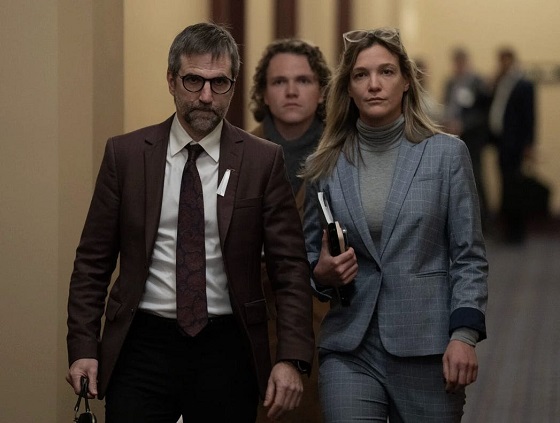
 Business1 day ago
Business1 day agoMan overboard as HMCS Carney lists to the right
-
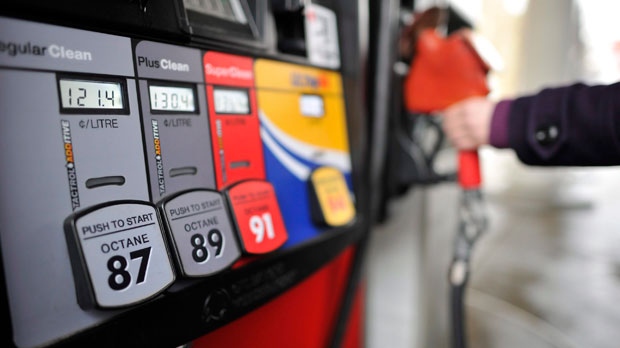
 Business1 day ago
Business1 day agoHigher carbon taxes in pipeline MOU are a bad deal for taxpayers
-
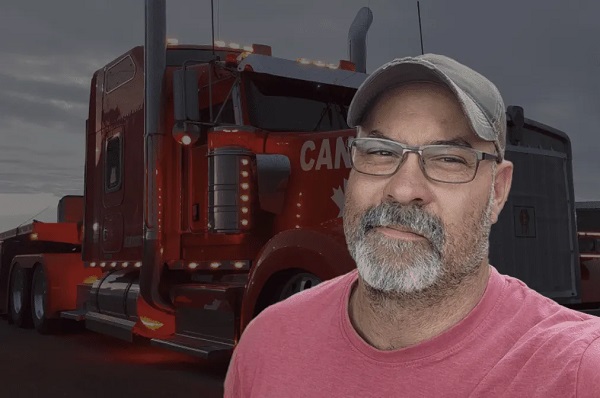
 COVID-192 days ago
COVID-192 days agoCanadian government seeking to destroy Freedom Convoy leader, taking Big Red from Chris Barber
-
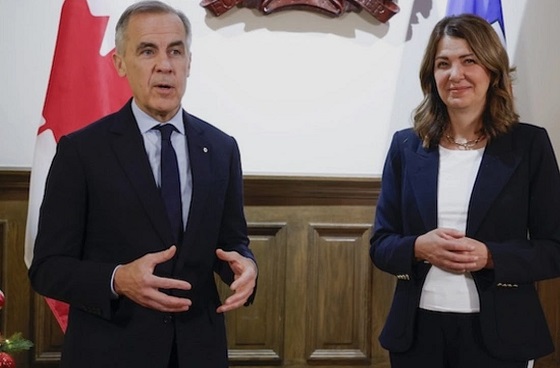
 Alberta1 day ago
Alberta1 day agoREAD IT HERE – Canada-Alberta Memorandum of Understanding – From the Prime Minister’s Office
-

 Energy2 days ago
Energy2 days agoMistakes and misinformation by experts cloud discussions on energy
-

 National2 days ago
National2 days agoQuebec proposes to ban public prayer, harden laws against religious symbols
-

 Alberta18 hours ago
Alberta18 hours agoAlberta can’t fix its deficits with oil money: Lennie Kaplan




